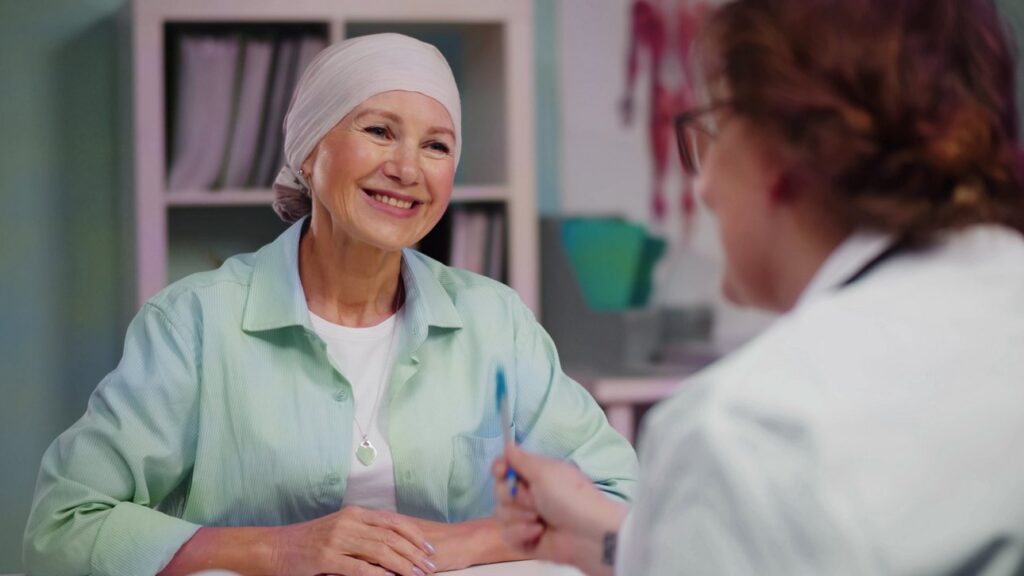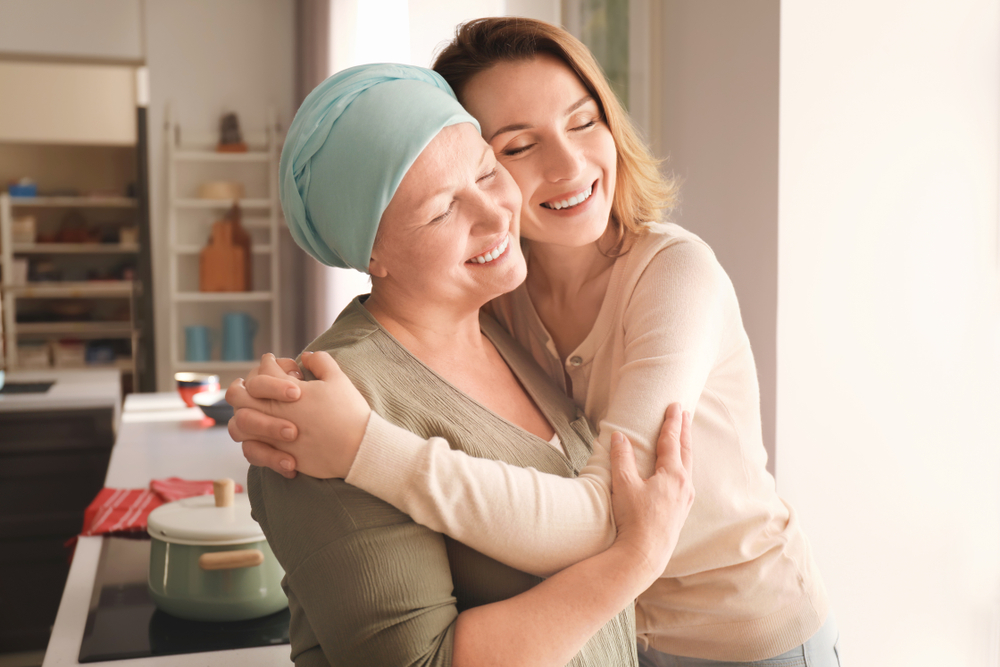
Migraines are not merely headaches, they are a complex neurological condition characterized by debilitating symptoms such as severe throbbing pain, hypersensitivity to light and sound, and often nausea and vomiting. This condition significantly impacts the daily lives of sufferers, limiting their ability to perform routine tasks and diminishing their quality of life. While traditional management strategies offer relief to some, many continue to search for more effective and less invasive solutions. In this context, Red Light Therapy (RLT) emerges as a promising approach, offering a non-invasive, innovative method to manage and alleviate the symptoms of migraines.
RLT, grounded in the principles of photobiomodulation (PBM), harnesses the therapeutic effects of red and near-infrared light wavelengths. This therapy works at a cellular level, where specific wavelengths of light penetrate the skin to reach the mitochondria, the powerhouse of the cell. By activating the mitochondria, RLT enhances adenosine triphosphate (ATP) production, the primary energy currency of the cell. This increase in ATP boosts cellular metabolism and energy, facilitating the repair and regeneration of cells.
RLT plays a crucial role in modulating inflammation, a key player in the pathophysiology of migraines. By reducing the production of pro-inflammatory cytokines and enhancing the levels of anti-inflammatory cytokines, RLT addresses the inflammatory processes that contribute to the development and persistence of migraine episodes. Additionally, RLT promotes vasodilation, improving blood flow and reducing the vasospasm that often triggers migraine pain. This therapy also influences the peripheral and central nervous systems, modulating pain perception pathways and potentially decreasing the severity and frequency of migraine attacks.
As we explore the benefits of Red Light Therapy for migraines, this article aims to provide a comprehensive overview of how RLT serves as an option for those afflicted by this challenging condition. Through a blend of scientific evidence and practical advice, we will explore the mechanisms by which RLT offers relief and the potential it holds for enhancing the well-being of individuals suffering from migraines.
Mechanism of Action: How Red Light Therapy Alleviates Migraine Symptoms
Red Light Therapy (RLT) stands at the forefront of innovative approaches to manage migraine symptoms through a mechanism known as photobiomodulation (PBM). This section talks about the scientific fundamentals of how RLT offers relief from migraines, highlighting its multifaceted action on cellular and physiological processes.
PHOTOBIOMODULATION: THE CORE MECHANISM
At the heart of RLT’s efficacy is photobiomodulation, a process by which light photons of specific red and near-infrared wavelengths penetrate the skin to reach the mitochondria within cells. Mitochondria, often referred to as the cell’s powerhouses, play a critical role in energy production. RLT stimulates these organelles to enhance the production of adenosine triphosphate (ATP), the cellular currency of energy.
This increase in ATP boosts cellular metabolism and function, facilitating the repair and regeneration of cells. For migraine sufferers, this enhanced cellular function can mean improved resilience against triggers and a reduction in the frequency and severity of migraine episodes.
ANTI-INFLAMMATORY EFFECTS
One of the hallmarks of migraine pathophysiology is inflammation. RLT’s ability to modulate the body’s inflammatory response is central to its benefits for migraine sufferers. Specifically, RLT has been shown to reduce the production of pro-inflammatory cytokines, small proteins that play a crucial role in initiating and sustaining inflammatory responses. Simultaneously, it increases the levels of anti-inflammatory cytokines, thereby reducing inflammation. By addressing this underlying cause of migraine pain, RLT can help to alleviate the intensity of migraine episodes and potentially reduce their overall occurrence.
IMPROVED BLOOD FLOW AND VASODILATION
Poor blood flow and vasospasm (sudden constriction of blood vessels) are also implicated in the onset of migraines. RLT promotes vasodilation, the widening of blood vessels, which improves blood flow to various parts of the body, including the brain. Enhanced blood flow ensures that tissues receive adequate oxygen and nutrients while facilitating the removal of metabolic wastes. This action can help to prevent the vascular changes associated with migraine attacks, offering relief to those affected.
MODULATION OF PAIN PERCEPTION
RLT’s impact extends to the modulation of pain perception, a crucial aspect for individuals experiencing the debilitating pain of migraines. The therapy may influence neural pathways involved in the transmission and perception of pain, potentially altering the way pain is experienced. While the exact mechanisms remain a subject of ongoing research, it is believed that RLT can reduce the excitability of nerve cells that transmit pain signals, thus lowering the perception of pain. Furthermore, RLT may affect the release of neurotransmitters and neuropeptides involved in pain pathways, further contributing to its analgesic effects.
RLT offers a holistic approach to managing migraines by addressing several underlying factors simultaneously. Its capacity to enhance cellular energy, modulate inflammation, improve vascular health, and alter pain perception presents a compelling case for its use as a supportive therapy for migraine sufferers. Through these mechanisms, RLT not only aims to alleviate the symptoms of migraines but also to improve the overall quality of life for those affected by this challenging condition.
Understanding Migraines
Migraines are a neurological condition that transcend the common headache, manifesting in episodes of severe, pulsating pain often confined to one side of the head. These episodes can last from a few hours to several days, and are frequently accompanied by nausea, vomiting, and extreme sensitivity to light (photophobia) and sound (phonophobia). The exact pathophysiology of migraines is multifaceted, involving complex interactions between neurological, vascular, and inflammatory factors that contribute to the onset and progression of migraine episodes.
At the heart of migraine pathophysiology is cortical spreading depression (CSD), a wave of neuronal and glial depolarization that sweeps across the brain, triggering the release of inflammatory mediators and neuropeptides. This cascade of events leads to the activation and sensitization of trigeminal nerves, which play a crucial role in the pain and vasodilation associated with migraine headaches.
The activation of these nerves not only contributes to the perception of pain but also prompts the release of pro-inflammatory substances like calcitonin gene-related peptide (CGRP) and substance P, further exacerbating vascular inflammation and pain sensation.
The management of migraines traditionally hinges on a combination of pharmacological interventions aimed at alleviating acute symptoms and preventive strategies designed to reduce the frequency and severity of migraine attacks. These include over-the-counter pain relievers, triptans (serotonin receptor agonists), and, in some cases, beta-blockers, antidepressants, or anti-seizure drugs as prophylactic measures. However, the variability in individual response and potential side effects of these medications drive the need for alternative therapies.

Red Light Therapy (RLT), a promising alternative that leverages the physiological mechanisms of photobiomodulation to address the underlying pathologies of migraines. RLT’s ability to enhance cellular energy production through increased ATP synthesis offers a foundational benefit, potentially improving cellular function and resilience against migraine triggers. This therapy’s anti-inflammatory action is particularly pertinent to migraine management, as it may mitigate the inflammatory processes central to migraine pathogenesis.
By reducing the production of pro-inflammatory cytokines and promoting vasodilation, RLT can alleviate the vascular and inflammatory components of migraines. Additionally, its role in modulating pain perception, possibly through effects on neural pathways, presents a novel avenue for reducing the intensity and frequency of migraine episodes, offering a good option for those seeking relief from this debilitating condition.

What is Red Light Therapy?
Red Light Therapy (RLT), also known as Low-Level Laser Therapy (LLLT), is a form of photobiomodulation that has garnered attention for its non-invasive approach to enhancing cellular function and promoting healing across various conditions, including migraines. RLT involves the use of low-level wavelengths of red light to penetrate the skin, targeting cells at a deep level to stimulate healing processes without causing damage or discomfort.
The core mechanism of RLT lies in its ability to stimulate photobiomodulation, a process where light photons are absorbed by mitochondrial chromophores within cells. This absorption triggers a series of mitochondrial and cellular responses leading to the production of adenosine triphosphate (ATP), the energy currency of the cell. Enhanced ATP production boosts cellular metabolism, promoting cell repair, regeneration, and reducing inflammation.
By increasing cellular energy, RLT facilitates the body’s natural healing processes. This is particularly relevant for migraine sufferers, as increased cellular function can improve the resilience of brain cells to the triggers and effects of migraines, potentially reducing the frequency and severity of episodes.
RLT’s ability to modulate inflammation is another critical aspect of its application for migraines. It reduces the production of pro-inflammatory cytokines, proteins that signal inflammation, and increases anti-inflammatory cytokines. This reduction in inflammation can alleviate the intracranial pressure and vascular changes associated with migraine pain.
Furthermore, RLT promotes vasodilation, the widening of blood vessels, which improves circulation and blood flow. Improved blood flow ensures that oxygen and nutrients are efficiently delivered to tissues, while waste products are removed, a process that can mitigate some of the vascular issues that trigger migraines.
RLT may also influence the neural pathways involved in the perception of pain, offering potential relief from the debilitating pain that characterizes migraines. The therapy’s effect on nerve cells and neurotransmitters could modulate pain signals, providing a degree of analgesia to migraine sufferers.
RLT can be administered using various devices, including handheld units, overhead panels, and even wearable devices, designed for clinical or home use. The choice of device and the specifics of the therapy regimen (wavelength, intensity, duration, and frequency) should be tailored to individual needs.
Clinical Evidence Supporting Red Light Therapy
The efficacy of Red Light Therapy (RLT), also known as Low-Level Laser Therapy (LLLT), in managing migraine symptoms is supported by a growing body of scientific evidence. These studies talks about RLT’s potential to not only alleviate pain but also to reduce the reliance on medication for migraine sufferers, highlighting its role as a promising non-pharmacological intervention.
A pivotal study, titled “APPLYING OF LOW LEVEL LASER THERAPY (LLLT) FOR PAIN MANAGEMENT IN MIGRAINE,” provides valuable insights into the effectiveness of LLLT in the context of migraines. The research findings suggest, “LLLT can be applied for pain attenuation and reduction in drug consumption successfully in migraine.“[1] This statement highlights the dual benefits of LLLT in not only managing pain but also in potentially reducing the need for medication. Such an outcome is particularly significant for individuals seeking alternatives to pharmacological interventions, which often come with side effects or the risk of medication overuse headaches.
Further evidence of LLLT’s efficacy in treating migraines comes from a study comparing the effects of Botulinum toxin A (BT-A) and LLLT in chronic migraine treatment. The study, titled “Botulinum toxin A (BT-A) versus low-level laser therapy (LLLT) in chronic migraine treatment: a comparison,” reveals compelling results favoring LLLT. The research notes, “In the LLLT group, the number of headache days sharply decreased, when the baseline was compared with the treatment phase (p < 0.001) with further decrease in the post-treatment phase (p < 0.001), showing a long-lasting effect of LLLT in CM (chronic migraine).“[2]
A clinical study titled “Light Therapy Modulates Serotonin Levels and Blood Flow in Women with Headache: A Preliminary Study” sheds light on the physiological effects of Low-Level Laser Therapy (LLLT) on individuals suffering from tension-type headaches. The research findings are particularly compelling, revealing that “Within the scope of our study, we conclude that LLLT has an immediate biological effect on local circulation when applied over the injured area and that 5-HT (serotonin) levels are augmented until three days following LLLT in patients with tension-type headache.“[3]
This highlights the dual benefits of LLLT in enhancing local blood flow and increasing serotonin levels, a crucial neurotransmitter involved in the modulation of pain and mood, providing insight into the mechanisms through which LLLT can offer relief to those suffering from chronic headaches and migraines.
This finding highlights not only the immediate benefits of LLLT in reducing the frequency of migraine days but also its sustained effects beyond the treatment period, offering a great alternative for chronic migraine sufferers.
These studies collectively affirm the potential of LLLT as a valuable tool in the migraine management toolkit. The ability of LLLT to diminish pain, reduce the frequency of migraine days, and potentially lessen dependence on medications addresses key concerns for those affected by this debilitating condition. The indication of long-lasting effects post-treatment suggests that LLLT could offer sustained relief, contributing to an overall improvement in quality of life for migraine sufferers.
Practical Considerations for Using Red Light Therapy for Migraines
When considering Red Light Therapy (RLT) as a part of a comprehensive strategy for managing migraines, several practical considerations must be taken into account to ensure the therapy is both effective and safe. RLT’s potential to enhance cellular function, reduce inflammation, improve blood flow, and modulate pain perception makes it a promising option for migraine sufferers. However, optimizing the benefits of RLT involves careful attention to device selection, treatment protocols, and safety guidelines.
CHOOSING THE RIGHT DEVICE
The effectiveness of RLT can vary significantly based on the device used. Key factors to consider when selecting a device include:
- Wavelength: The most effective wavelengths for RLT fall within the red to near-infrared light spectrum, typically between 650nm, 660nm, 810nm, 830nm, 900nm and 980nm for migraines. These wavelengths have the optimal penetration depth and are most effective in stimulating the desired photobiomodulation effects. Consult our Wavelength Benefits Guide for information on specific conditions.
- Power Density: Also known as irradiance, this refers to the power output per unit area of the device. A balance is crucial here; too low may be ineffective, while too high could risk tissue damage or discomfort.
- Treatment Area Size: Depending on whether migraines are localized or involve larger areas of the head, the size of the light-emitting surface of the device can play a role in its effectiveness.
In conclusion, when incorporated safely, Red Light Therapy can offer significant benefits for individuals suffering from migraines, potentially reducing their frequency and severity. By considering the key practical aspects of device selection, treatment protocols, and safety, users can optimize the therapeutic benefits of RLT, making it a valuable component of a migraine management strategy.

In conclusion, Red Light Therapy (RLT) presents a compelling and innovative approach to managing migraines, offering a non-invasive method to alleviate symptoms and enhance quality of life for sufferers. By harnessing the principles of photobiomodulation, RLT stimulates cellular mitochondria, enhancing adenosine triphosphate (ATP) production and promoting cellular metabolism. This increase in cellular energy not only aids in reducing inflammation—one of the key underlying factors in migraine pathophysiology—but also improves blood flow and modulates pain perception pathways.
The benefits of RLT extend beyond immediate symptom relief, offering potential long-term improvements in the frequency and intensity of migraine episodes. By integrating RLT into a comprehensive migraine management strategy, individuals may experience a reduction in their reliance on pharmaceutical interventions, along with an overall improvement in their well-being.
However, the effectiveness of RLT requires careful consideration of several practical aspects, including the selection of appropriate devices, adherence to recommended treatment frequencies and durations, and the integration of RLT into a broader holistic approach to migraine management. As the understanding of RLT deepens and its application expands, it holds the potential to offer new hope to those seeking relief from the debilitating effects of migraines, marking a significant advancement in the field of non-pharmacological interventions.

References
[1] Mokmeli, Soheila & Nesionpour, Dr & Rasoli, Dr. (2006). APPLYING OF LOW LEVEL LASER THERAPY (LLLT) FOR PAIN MANAGEMENT IN MIGRAINE.
[2] Loeb LM, Amorim RP, Mazzacoratti MDGN, Scorza FA, Peres MFP. Botulinum toxin A (BT-A) versus low-level laser therapy (LLLT) in chronic migraine treatment: a comparison. Arq Neuropsiquiatr. 2018 Oct;76(10):663-667. doi: 10.1590/0004-282X20180109. PMID: 30427505.
[3] Tomaz de Magalhães M, Núñez SC, Kato IT, Ribeiro MS. Light therapy modulates serotonin levels and blood flow in women with headache. A preliminary study. Exp Biol Med (Maywood). 2016 Jan;241(1):40-5. doi: 10.1177/1535370215596383. Epub 2015 Jul 22. PMID: 26202374; PMCID: PMC4935433











